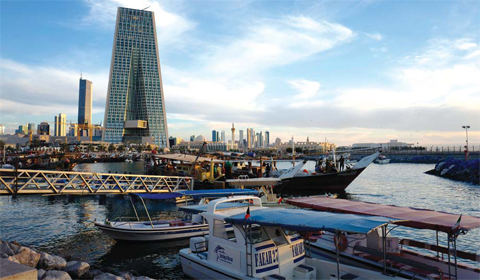Creation decree established Kuwaiti Dinar as Kuwait's official currency
KUWAIT: The Central Bank of Kuwait (CBK) will marked yesterday the golden jubilee of its establishment as the premier government-banking institute in the country. According to the CBK, the bank was established by virtue of the Law 32/1968 concerning the Kuwaiti currency, the establishment of the Central Bank of Kuwait and organizing the national banking business. The CBK replaced the Kuwaiti Currency Board established by an Amiri Decree 41/1960.
The decree also established the Kuwaiti Dinar as the official currency of the country. The role of the Kuwaiti Currency Board was limited to the issuance of banknotes and coins, unlike the Central Banks' broad responsibilities ranging from setting and implementing monetary policies to the regulation and supervision of banking activities. CBK's establishment was in response of the need to keeping pace with domestic and international developments, particularly in view of the increasingly important role of the monetary and financial policy contributing to the advancement of social and economic development in the country.
Core objectives
CBK commenced operation on April 1, 1969, to fulfill the core objectives of article 15 of Law 32/1968 regarding the issuing of the national currency on behalf of the State, maintaining the relative stability of the Kuwaiti Dinar, and securing the currency's free convertibility into foreign currencies.
The CBK's establishment also came to direct the credit policy with the aim of contributing to social and economic progress and enhance the national income. Supervising the state's banking system and serving as bankers and financial advisers to the government are also amongst the core duties of the Central Bank of Kuwait. The paid-up capital of the Central Bank of Kuwait (CBK) was at KD five million, fully paid up by the government.
A Board of Directors, encompassing the Governor of CBK and the Deputy Governor, manage the Central Bank of Kuwait and they are appointed by a decree for a five-year renewable term. The Board of Directors comprises of a representative of the Ministry of Finance, a representative of the Ministry of Commerce and Industry, and four other members with proven experience in the economic, financial and banking affairs, appointed by a decree for a three-year renewable term.
Main professions
Prior to the establishment of the CBK and the age of petroleum, Kuwait's monetary and economic policies were linked to the country's main professions of agriculture, pearl diving, fishing, and livestock herding. The first type of currency used in Kuwait was the Gulf rupee, a currency equal to the then Indian rupee issued by the British Empire. At establishment, the Kuwaiti Dinar was equal to 2.48 grams of pure gold, the same value of the British Pound Sterling back in the 1960s.
As for the banking sector, the first commercial bank was the National Bank of Kuwait (NBK), which was established on an Amiri decree issue on May 19, 1952. While the 1960s and early 1970s were marked as periods of great economic and commercial boom, the 1980s with its various geopolitical challenges and the Kuwaiti market crash had affected the financial status of the country; however, the CBK tried its best to better situation namely through its 1986 program to handle hard debt. Kuwait did surpass this harsh period in its history; however, the Iraqi invasion of the country in 1990, which lasted for 7 months, had yet again posed as a threat to the Kuwaiti monetary system. After the liberation in 1991, Kuwait rebounded from its bleak situation and throughout the early 2000s and with the advent of the global economic crunch, which began in late 2007 and lasted throughout 2008, the CBK managed to steer the monetary system in the country away from pitfalls and dangers. - KUNA











